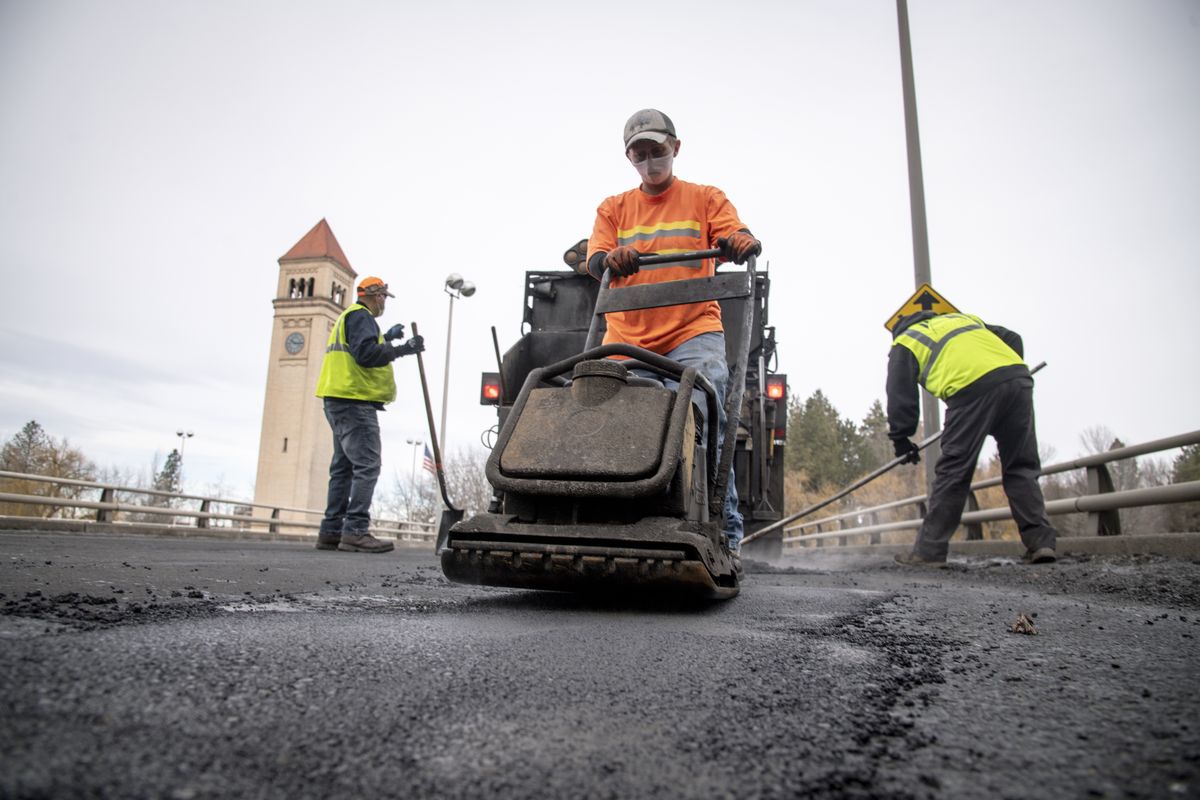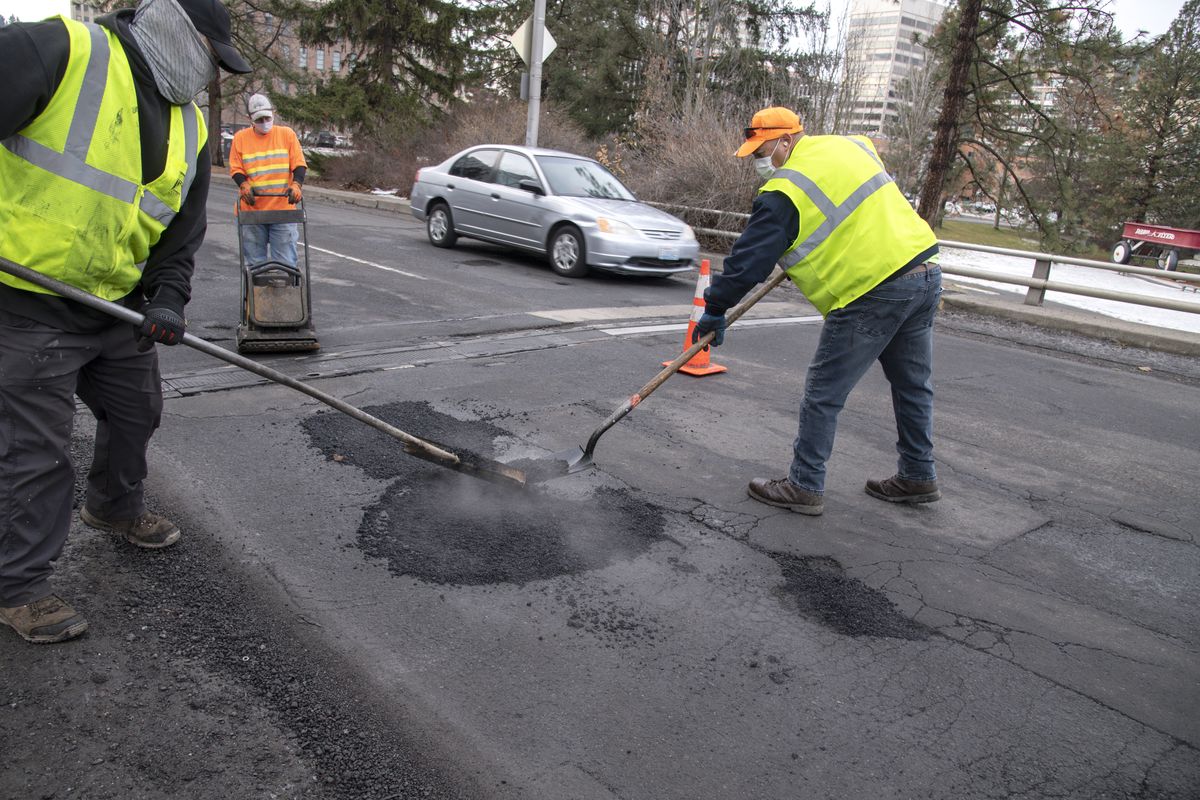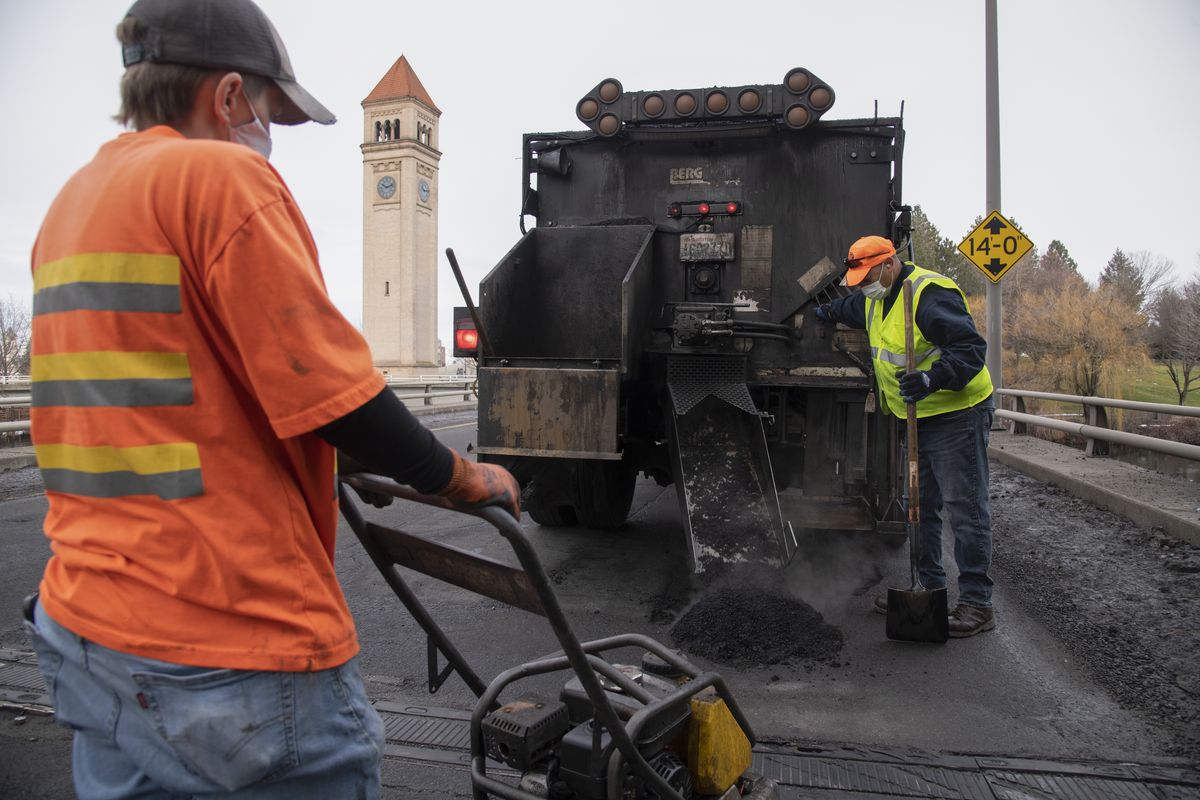Getting There: When the snow goes away, the potholes take center stage in the Inland Northwest

By now, you’ve probably seen them.
Those gaping gashes in the region’s roadways have once again emerged, prompting crews throughout the Inland Northwest that had once been pushing the snow away to circle back and patch the potholes.
“Potholes are our priority this time of year,” said Todd Feusier, director of the city of Coeur d’Alene’s Street and Engineering Department. “If we’re not removing snow, we’re filling potholes.”
The number and severity of the pockmarks on the roadway has a lot to do with the weather, said Kirstin Davis, communications manager for the Spokane Public Works division. That’s reflected in the total number of potholes city crews fill, which is tracked on the city’s website. In 2020, crews filled more than 5,800 potholes. But last year, that number was just 3,400. Which is actually a good thing.
“Ultimately, the goal is to have less potholes to repair,” Davis wrote in an email. “So the number going down is not necessarily a sign of less work being done; but rather, less repairs needing to be done.”
But crews can’t fill a hole they don’t know is there.
In the city of Spokane, drivers can use a smartphone application to pinpoint the coordinates of a biway blemish for crews to fill, or dial 311. Coeur d’Alene also allows drivers to help scout potholes online, or they can dial the front desk of the street department at (208) 769-2235, Feusier said.
Potholes form when water seeps into a crack in the paved surface, pooling beneath the asphalt and expanding upon refreezing. Then, if the water warms and melts again, a hole is left beneath the driving surface, causing a collapse.
While this is most common on paved roads, it’s also seen on the gravel portions of Spokane County’s 5,100 lane miles of roadways, said Martha Lou Wheatley-Billeter, public works information and outreach manager for the county.
“Gravel roads can have potholes, but the big problem is washboarding,” she said. That’s when the cycle of freezing, thawing and refreezing creates a what looks like ripples on the roadway as water washes out onto shoulders.
The fix is to grade the road, but that can’t be done until drier weather in the spring, Wheatley-Billeter said.
“This is weather-driven,” she said. “We can’t grade mud and we can’t grade dust.”
Street Department workers Tom Daves, left, Kelly Stevens, center, and Alex Mizner patch holes in the asphalt on Washington Street, north of Spokane Falls Boulevard Friday, Jan. 21, 2022. Midwinter pothole repair requires heating up cold patch materials to help it adhere to the roadway. (Jesse Tinsley/THE SPOKESMAN-REVIEW)Buy a print of this photo
Spokane County drivers can report potholes by calling a dedicated hotline, at (509) 477-2547. They can also be reported using a form available on the Spokane County Public Works website.
The recommendation for county drivers on washboarded gravel roads is the same as those for motorists dodging potholes on city streets – slow down and stay alert.
“I would just ask that the public be patient with us,” Feusier said. “We have all our staff out working on this.”
In addition, Davis noted, residents can clear the storm drains in their neighborhoods of debris. That allows water to drain into the city’s stormwater system, and not stand on the roadways, where it could refreeze overnight and cause bigger holes to form.
Just like washboarding, the permanent fix for a pothole-laden road has to wait for the spring, when drier conditions and warmer temperatures allow the hole to dry out and the filler material to set properly. In Spokane, a pair of crews dispatched to the city’s north and south halves are outfitted with trailers and trucks that can heat up the patching material, making for a longer-term solution, Davis said.
“What we’ve found is that if we heat up the materials when we’re filling those potholes, it’s a much better repair,” Davis said. That approach was developed following a dramatic 2017 pothole season in which the city brought in workers from other departments and urged an asphalt plant to open early in the season to deal with dire road divots.
Coeur d’Alene crews also use equipment that can heat up filler material on the spot of a pothole, said Feusier.
“We have good luck with that, as long as we can dry out the hole,” he said. “We can probably make it until spring and summer.”
To prevent the forming of potholes in the first place, crews perform what’s known as crack-sealing, filling crevices in a driving surface with a sealant product that not only prevents water, but debris, from lodging itself below a road’s surface, causing future problems.
Wheatley-Billeter said another problem facing Spokane County crews is the lack of available workers to respond to issues. As of last week, Spokane County’s Road Maintenance team was down a dozen workers from their full staffing level of close to 70.
As those holes start to reveal themselves between layers of melting snow, officials requested patience and room to work to make the roadways passable once more.
“We’re all trying to do the same work, trying to do what we can to minimize the problem,” Davis said.
Work to watch for
Seventh Avenue between Browne and Bernard streets near Providence Sacred Heart Medical Center will be closed Saturday for crane work.
The curb lanes of 29th Avenue between Regal and Ray streets in the Lincoln Heights neighborhood will be merged and flagged beginning Thursday through Feb. 27 for Sefnco work.





